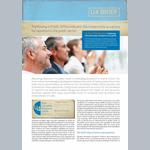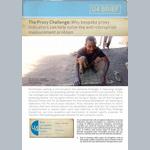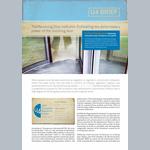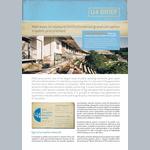U4 Proxy Challenge Competition 2016 – Call for proposals
<div class="event-icon"></div> <span>Save this event in my Outlook calendar</span>
<div class="event-icon"></div> <span>Save this event in my Google Calendar</span>

The deadline for entries has now passed. For more information about the award and winners see The Proxy Challenge Award 2016.
The Proxy Challenge Competition was launched in 2013 to help aid donors better assess the results of anti-corruption efforts. In 2014, the U4 Anti-Corruption Resource Centre ran the first edition of the challenge, and brought together a body of promising, bespoke proxy indicators.
In this second round we still aim to find the best proxy indicators that can track progress of anti-corruption reform initiatives. We need reliable, intuitive, accessible, and cost-effective assessment methods that are useful across country-contexts.
CALL FOR PROPOSALS
Do you know any indicators that help show the direction of change and progress of reform efforts (rather than measuring the quantity or volume of corruption per se)?
Can you help us identify indicators that measure whether anti-corruption efforts are having an effect? If so, U4 welcomes your proposal.
HOW IT WORKS
The Proxy Challenge Competition II is open to academics, private and public sector organisations, as well as representatives of civil society.
A panel of experienced anti-corruption practitioners and academics will evaluate the submitted proposals.
The U4 Anti- Corruption Resource Centre and the UK Department for International Development (DFID) will also work with the proposal authors to test the relevance and validity of the proposed proxy indicator(s):
- If the proposed ideas have merit, we will give financial support to develop a policy paper on the proxy indicators presented.
- If we see that your proposed indicator is relevant to the needs of donor partner countries, we would like to work with you to test the proxy indicator for actual reporting in selected countries.
The two best submissions will be rewarded with an expenses-paid trip to present at the Proxy Challenge which will be held at the International Anti-Corruption Conference in Panama, 1-4 December, 2016 (exact date to be confirmed).
SUBMISSION REQUIREMENTS
- Clearly define the proxy indicator(s) you suggest as a good measure of anti-corruption reform results.
- Clarify how the proxy indicator reflects changes in corrupt behaviour. Present ideas for how to test the validity of the proxy indicator.
- Describe any relevant geographic, sectoral, or institutional context for the proxy indicator.
- Explain how the indicator can be combined with other proxy and non-proxy (direct) indicators to obtain a better measurement of overall anti-corruption progress.
- Comment on the strengths and weaknesses of the proxy indicator, including how they differ with shifting national contexts.
- Comment on the usefulness for different agents: aid agencies, governments, civil society, and others for the purposes of monitoring and reporting.
WORD LIMIT
700
DEADLINE
1 September 2016
SEND TO
proxychallenge@u4.no
BACKGROUND READING
U4 Briefs developed from the The Proxy Workshop 2014:
New ways to measure institutionalised grand corruption in public procurement
The Revolving Door Indicator: Estimating the distortionary power of the revolving door
PRINTABLE LEAFLET
Publications

The Kinship in Public Office indicator: Kin connectivity as a proxy for nepotism in the public sector

The Proxy Challenge: Why bespoke proxy indicators can help solve the anti-corruption measurement problem

The revolving door Indicator: Estimating the distortionary power of the revolving door
